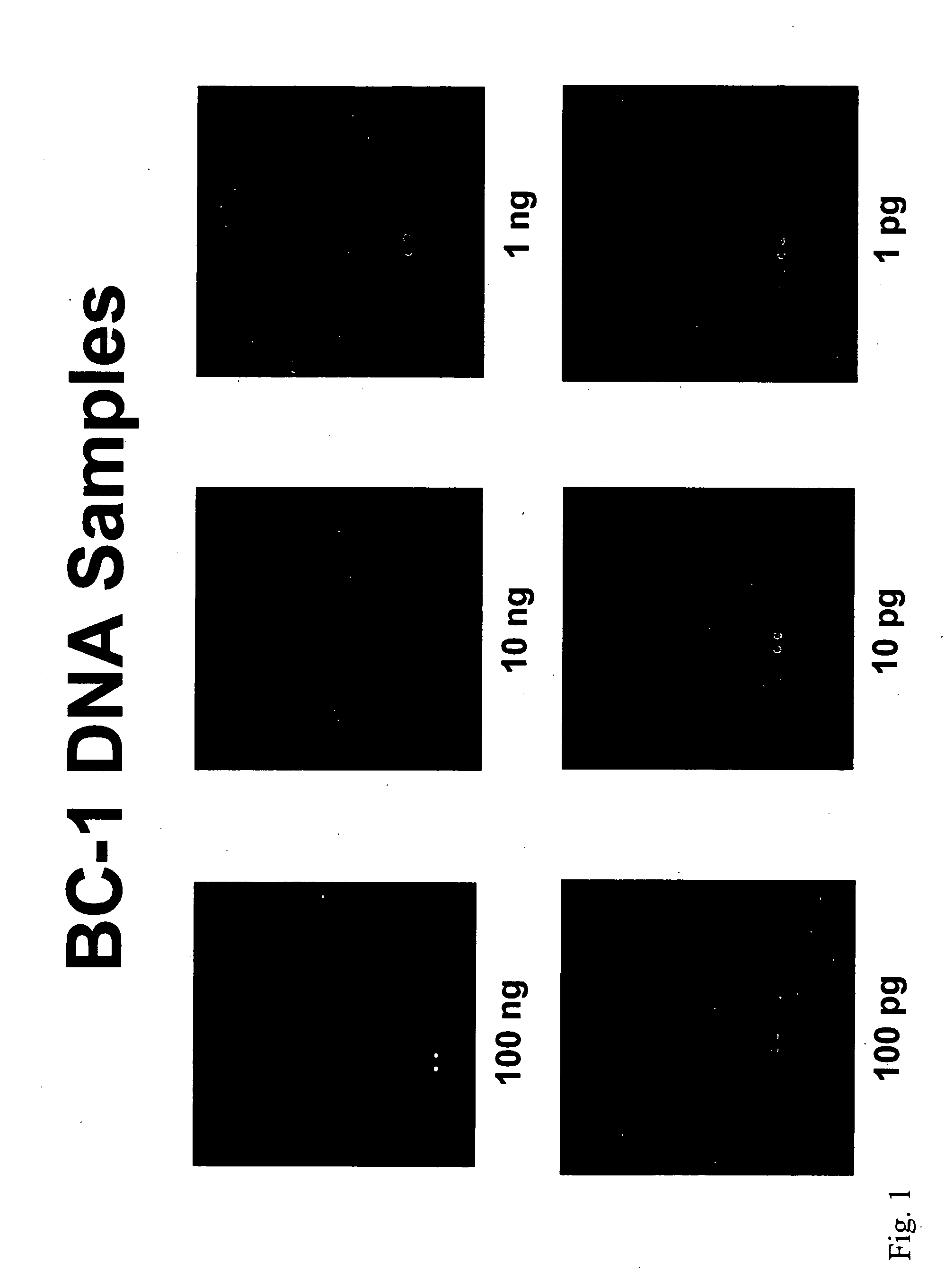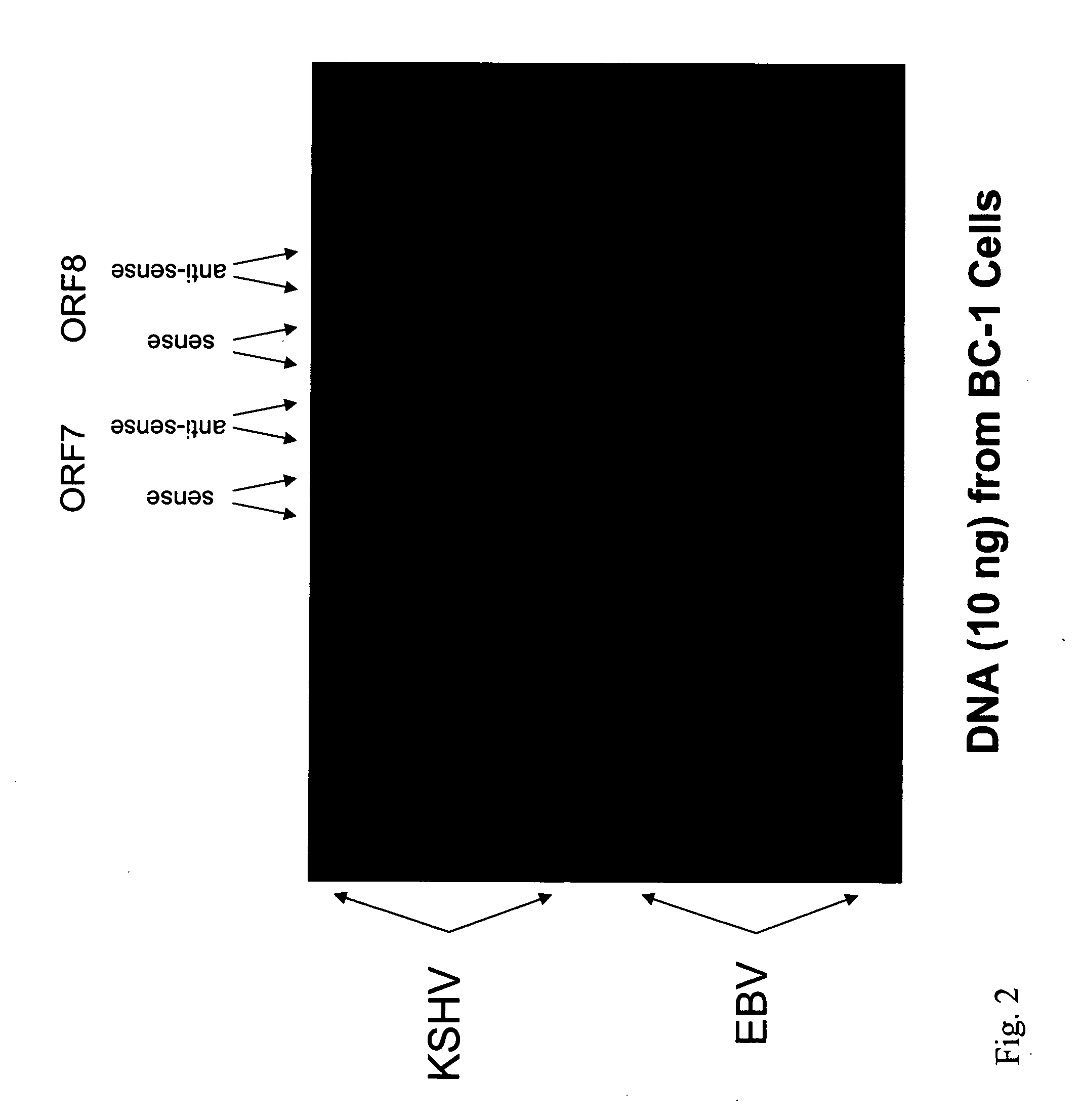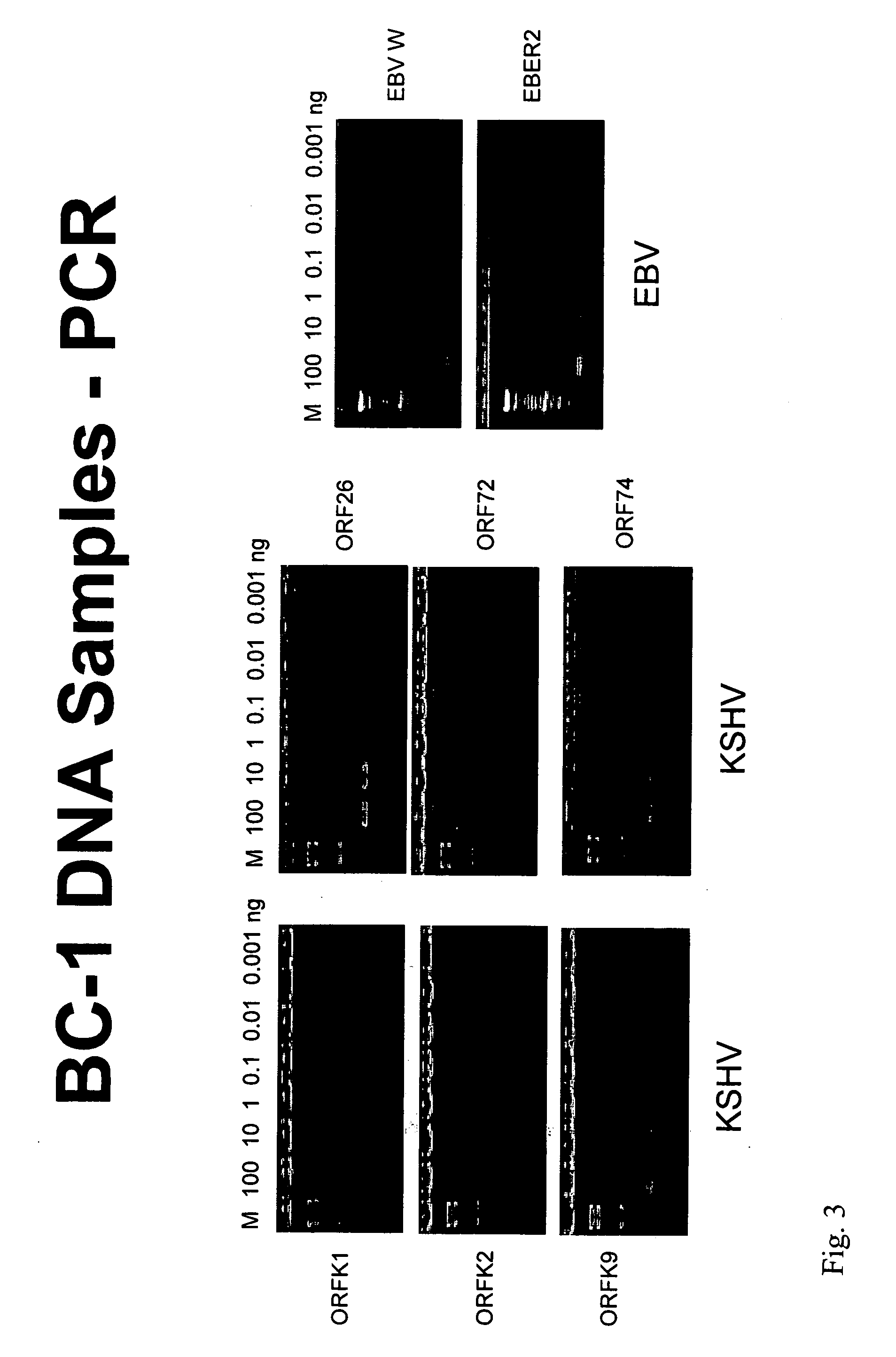Detection of nucleic acids
a nucleic acid and detection method technology, applied in specific use bioreactors/fermenters, biomass after-treatment, biochemical apparatus and processes, etc., can solve the problems of reducing the detection accuracy of dntps, affecting the detection accuracy of pcr, and unable to predict and control side reactions in general, so as to achieve the detection of balanced versus unbalanced multiplex pcr reactions, the effect of high throughpu
- Summary
- Abstract
- Description
- Claims
- Application Information
AI Technical Summary
Benefits of technology
Problems solved by technology
Method used
Image
Examples
example 1
Amplification and Detection of KSHV / EBV-Specific Nucleic Acids in a Sample
[0161] This example demonstrates how KSHV / EBV-specific nucleic acids can be amplified from a sample and detected using specific probes on an oligonucleotide array.
Production of Primers and Probes
[0162] The KSHV and EBV genomes were screened for virus-specific sequences. These sequences were blasted against the human genome to ensure that no highly similar sequences are present in the human genome. On the basis of this analysis, virus-specific oligonucleotide probes were designed using Primer Quest software (Integrated DNA Technologies, Inc., Coralville, Iowa), that correspond to the target virus-specific genomic sequences (each about 55 base pairs in length, with a Tm of 72-73° C. and a percent GC content of 45-50). Both sense and antisense versions of each virus-specific oligonucleotide probe were prepared. Primers with sequences that flank those of the target virus-specific genomic sequences were also pr...
example 2
Amplification and Detection of Pathogen-Specific Nucleic Acids in a Sample
[0175] This example demonstrates how pathogen-specific nucleic acids can be amplified from a sample and detected using specific probes on an oligonucleotide array.
Production of Primers and Probes
[0176] The genomes of the following pathogens were screened for pathogen-specific sequences: Variola major, Vaccinia virus, Ebola virus, Marburg virus, Bacillus anthracis, Clostridium botulinum, Francisella tularensis, Lassa Fever virus, Lymphocytic Choriomeningitis virus, Junin virus, Machupo virus, Guanarito virus, Crimean-Congo Hemorrhagic Fever virus, Hantavirus, Rift Valley Fever virus, Dengue virus, Yersinia pestis, West Nile virus, and SARS-CoV. These sequences were blasted against the human genome to ensure that no highly similar sequences are present in the human genome. On the basis of this analysis, pathogen-specific oligonucleotide probes were designed using Primer Quest software (Integrated DNA Technol...
example 3
Amplification and Detection of Pseudomonas aeruginosa-Specific Nucleic Acids in a Sample
[0186] This example demonstrates that Pseudomonas aeruginosa-specific nucleic acids can be amplified from a sample and detected using specific probes on an oligonucleotide array.
Production of Primers and Probes
[0187] The P. aeruginosa genome was screened for bacterial-specific sequences. These sequences were blasted against the human genome to ensure that no highly similar sequences are present in the human genome. On the basis of this analysis, P. aeruginosa-specific oligonucleotide probes were designed using Primer Quest software (Integrated DNA Technologies, Inc., Coralville, Iowa), that correspond to the target Pseudomonas aeruginosa-specific genomic sequences (each about 55 base pairs in length, with a Tm of 72-73° C. and a percent GC content of 45-50). Both sense and antisense versions of each P. aeruginosa-specific oligonucleotide probe were prepared. Primers with sequences that flank ...
PUM
 Login to View More
Login to View More Abstract
Description
Claims
Application Information
 Login to View More
Login to View More - R&D
- Intellectual Property
- Life Sciences
- Materials
- Tech Scout
- Unparalleled Data Quality
- Higher Quality Content
- 60% Fewer Hallucinations
Browse by: Latest US Patents, China's latest patents, Technical Efficacy Thesaurus, Application Domain, Technology Topic, Popular Technical Reports.
© 2025 PatSnap. All rights reserved.Legal|Privacy policy|Modern Slavery Act Transparency Statement|Sitemap|About US| Contact US: help@patsnap.com



